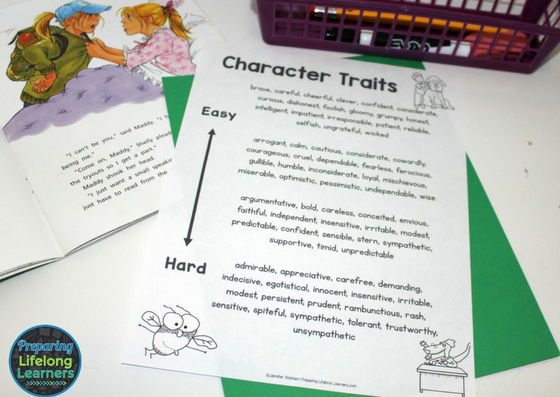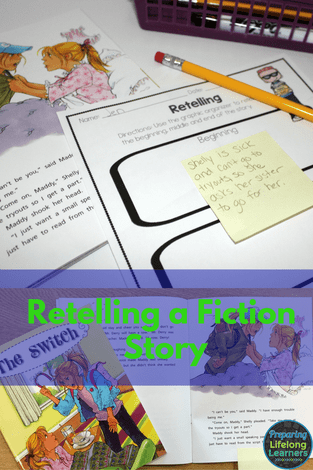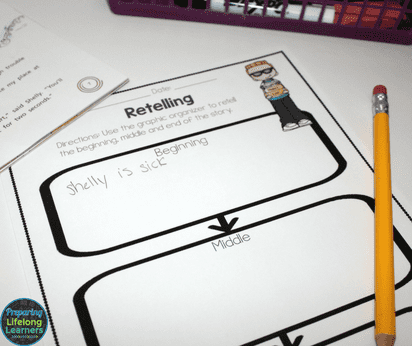|
Character traits are SO hard for students to identify. Especially students struggling with reading. We get a lot of they were "good" or "bad". Identifying them can also be hard for students with limited vocabulary. When we want to talk about character traits we love to use this strategy! It comes from Jan Richardson and Manyak's schoolwide vocabulary approach. Even though it's a schoolwide approach, we've found that it works great for our intervention students. We have a great list of grade/age appropriate character trait words. It's leveled from kindergarten to sixth grade. On our sheet we placed easier to harder as the label to not discourage our students. The students look through the list too pick a word that describes the character. Once they decide on a word (and we do a lot of teaching vocabulary as we go through the list) they must find the proof, or evidence, of that word describing the character. We use this graphic organizer to record our words and proof. It helps not only teach character traits, but also a whole list of words that describe the characters (that students may or may not know!).
Click HERE for a FREE copy of this great Character Trait Chart so you can start using it in your classroom! There are two versions of the chart. The first version has words from kindergarten/first grade to third and fourth grade. The second version, a little tougher, has words all the way up until 6th grade.
1 Comment
How do you teach retelling a story to older students that struggle with it? Scaffolding, scaffolding, scaffolding! The first step is to place sticky notes into the book. One at the beginning, middle and end of the story. This way, the students don't need to worry about what part is the beginning, middle or end of the story. The teacher starts by modeling to the students how to write a 1 or 2 sentence summary of the parts of the story (we've previously practiced the Who and What Happened strategy so we use that). We then gradually release it back to the students to write the parts on their own. We love to use Anita Archer's I Do (teacher), We Do (the group together), You Do (student) strategy. Each group is different for releasing the strategy back to them. Some get it right away, and others need more teaching or group modeling. Gage your students for when they are ready to work on the strategy by themselves. At first we place the sticky notes onto a graphic organizer. Eventually, over time, we flag the parts to the story and they only write onto the graphic organizer. After being successful with the graphic organizer they are usually great with verbal retells of the beginning, middle, and end of the story. We've tried skipping parts or moving faster, but our students really need all of these steps. Students not in interventions or struggling to retell may be able to move a little faster or skip some parts!
To use the BME strategy in your class all you need is sticky notes! We use these great graphic organizers. If you are interested in them for your students to organize their thoughts they can be found at our Teachers Pay Teachers story by clicking on the pictures or this link! |
MEET JENI'm a mom, wife, and teacher that loves to read, hang out with my family, and learn. I love to use our blog to share ideas with others and to help keep me learning!
Categories
All
Archives
December 2021
|












 RSS Feed
RSS Feed